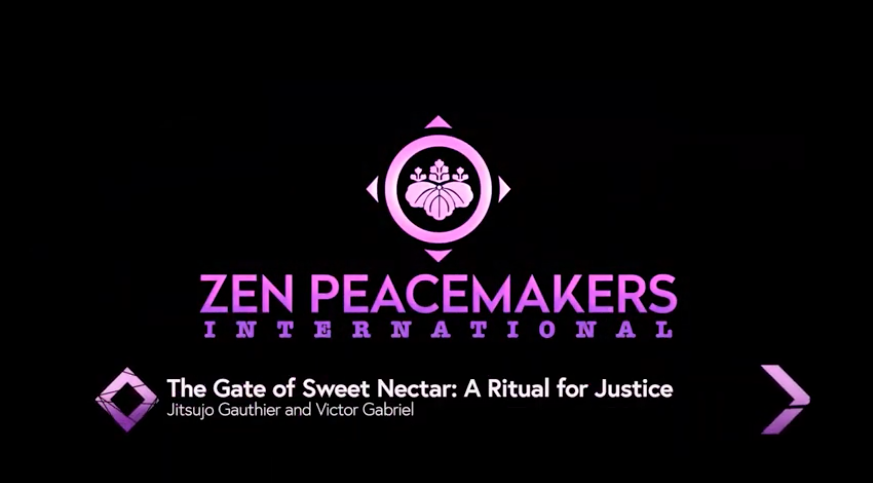
Gate Of Sweet Nectar: A Ritual for Justice
- Presenter: Jitsujo Gauthier and Victor Gabrie
- Subject: Liturgy, Peacemaker Circle, Practice

Gate Of Sweet Nectar with Rev. Dr. Jitsujo Gauthier and Rev. Dr. Victor Gabrie (May 13, 2021)
The Gate of Sweet Nectar called Kan Ro Mon (甘露門) in Japanese, and Sur (“gsur”) in Tibetan, is a ceremony to feed the Hungry Ghosts. This ritual will be based on a Japanese Shingon and a Tibetan Buddhist service and has roots in the Vajrayana tradition. The service invites the wisdom energies of the Buddha families (i.e., Buddha, Vajra, Ratna, Padma, and Karma families) to be present at the feeding of the Hungry Ghosts and “evil spirits” in our lives.
In Buddhist mythology, hungry ghosts are depicted as beings with huge bellies and tiny necks that suffer from endless hunger and thirst. They represent aspects of ourselves and of society that are neglected, disowned, that have been unserved and/or unnurtured; they are ways we feel separate, unacknowledged, and ignored. We envision climate injustice, racial discrimination, social injustice, gun violence as evil spirits that have oppressed both the powerful and the powerless.
During the ceremony we invite all the hungry and evil spirits to come forward into the light; we offer them food, chanting, and spiritual nourishment so that they can receive satisfaction, equity, and be liberated from their condition. Thich Nhat Hanh says that if we want to change our relationship with someone on the outside of our society, we need to begin by changing our relationship to ourselves. What aspects of yourself are currently suffering? What aspects of suffering do you see in society? How does this ceremony go to the root of our Buddhist practice? How can you stretch yourself and truly see yourself as the other, and the other as yourself?

Our mission is to realize our oneness and relieve suffering through contemplative social action.
ADDRESS:
190 Valley Vista Lane
Boulder, CO 80302
email: info@zenpeacemakers.org
Phone: (INT +1) 917.633.9550 (USA) Monday – Friday
© 2023 Zen Peacemakers